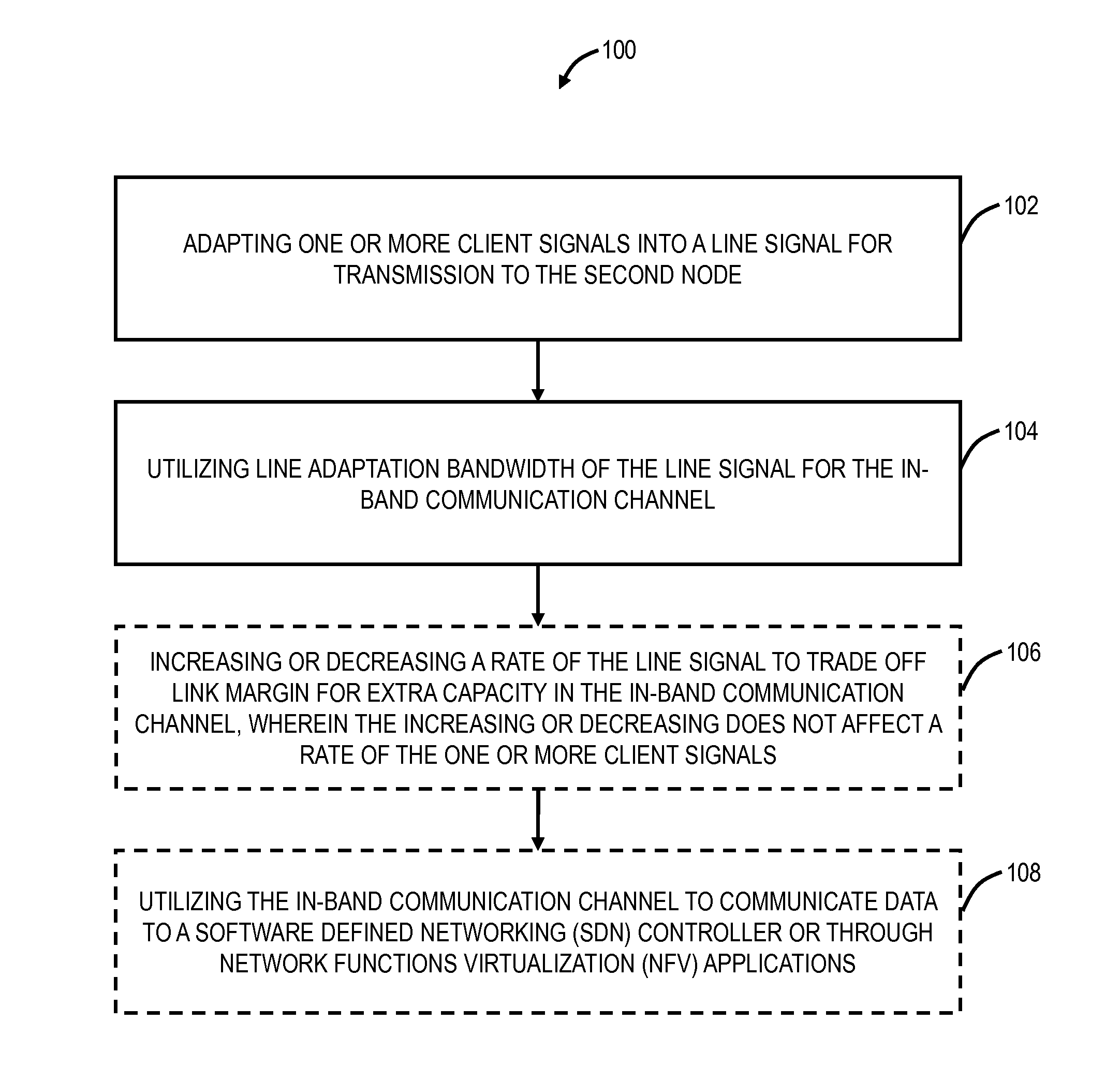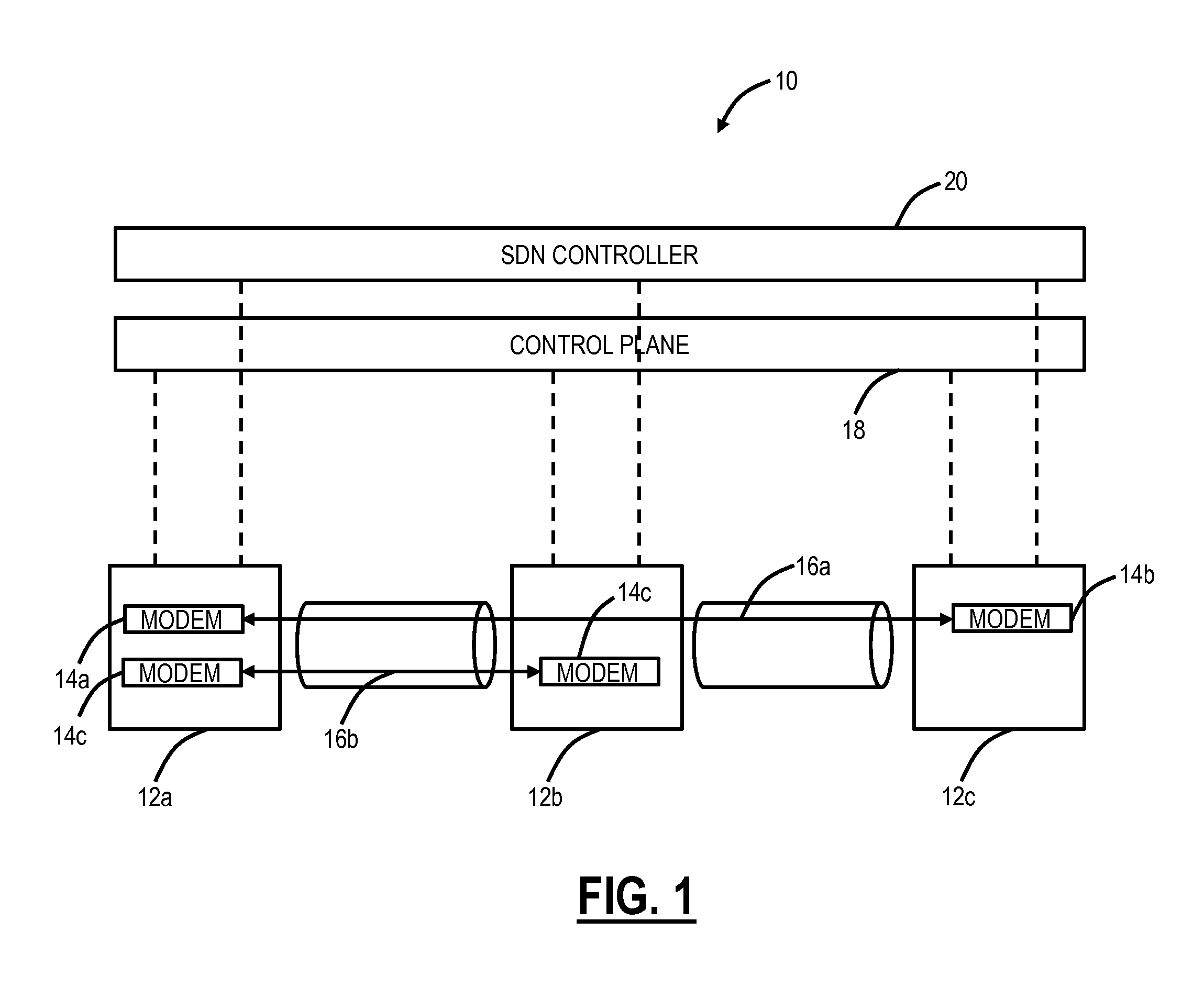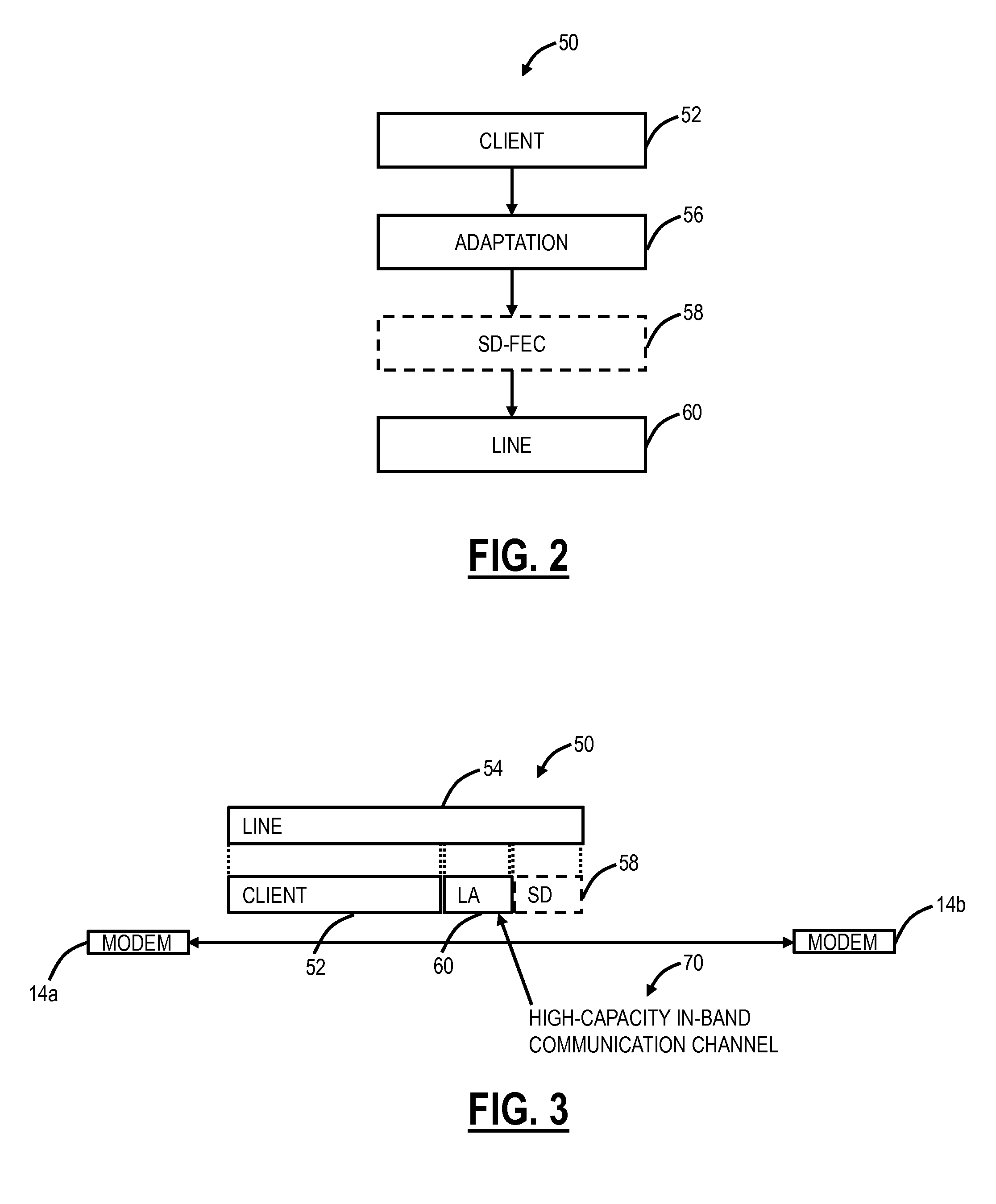In-band communication channel in optical networks
a technology of optical network and communication channel, applied in the field of optical communication system and method, can solve the problems of consuming valuable client/customer transport bandwidth, consuming gcc data rate in otn, and sdn hubbed nature, etc., and achieves the effect of less capacity, greater capacity, and greater capacity
- Summary
- Abstract
- Description
- Claims
- Application Information
AI Technical Summary
Benefits of technology
Problems solved by technology
Method used
Image
Examples
Embodiment Construction
[0017]In various exemplary embodiments, an in-band communication channel, with higher capacity than existing in-band communication channels, is formed between two optical modems using line adaptation bandwidth. The line adaptation bandwidth is the difference between client bandwidth and line bandwidth. The client bandwidth can be rates based on Optical channel Transport Unit-k (OTUk) where k=2, 3, or 4; Optical channel Transport Unit Cn where C means 100 and n is a multiplier of 100, e.g. OTUC2 is ˜200 Gb / s, OTUC4 is ˜400 Gb / s, etc.; or the like. The line bandwidth can be based on a rate associated with a modem for a proprietary line side (Single Vendor Intra-Domain Interface (SV-IaDI)) and can vary based on baud-rate, modulation format, Soft-Decision Forward Error Correction (SD-FEC), and the like. The line rate adaptation bandwidth previously was idle or null data. Note, as described herein, the line adaptation bandwidth can be described as the difference between the actual client...
PUM
 Login to View More
Login to View More Abstract
Description
Claims
Application Information
 Login to View More
Login to View More - R&D
- Intellectual Property
- Life Sciences
- Materials
- Tech Scout
- Unparalleled Data Quality
- Higher Quality Content
- 60% Fewer Hallucinations
Browse by: Latest US Patents, China's latest patents, Technical Efficacy Thesaurus, Application Domain, Technology Topic, Popular Technical Reports.
© 2025 PatSnap. All rights reserved.Legal|Privacy policy|Modern Slavery Act Transparency Statement|Sitemap|About US| Contact US: help@patsnap.com



